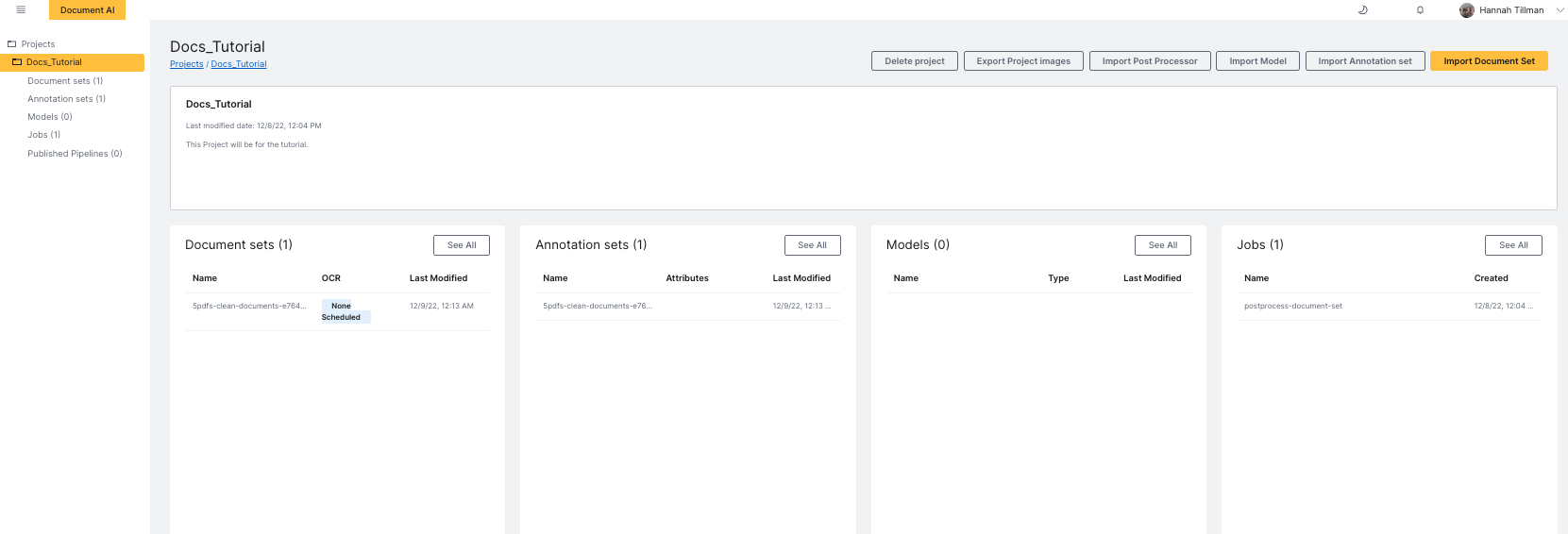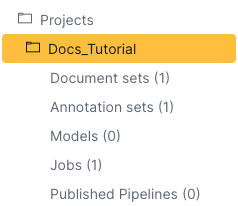Understanding the user interface
The user interface of H2O Document AI - Publisher is intuitive.

Navigating H2O Document AI - Publisher
There are four ways you can interact with H2O Document AI - Publisher: the left navigation bar, the upper navigation bar, the Info button at the end of each set/model/job row, and the drop-down arrow next to the Info button.
Left navigation bar
The left navigation bar takes you to the other pages within your project: Document sets, Annotation sets, Models, Jobs, and Published Pipelines. The number of files or items on each page is listed next to the page name (e.g. Document sets (1)). This navigation bar stays the same regardless of what page you are on.

Upper navigation bar
The upper navigation bar shows certain tasks you're able to accomplish on each page. These tasks are options which don't depend on which files you've selected (and are therefore clickable without selecting a file) or are options that depend on selection and support batch operation (and are therefore not clickable until you have selected a file).
This navigation bar changes depending on which page you are on. On the Project page, for example, there is the option to delete the project, export project images, import a post processor, import a model, import an annotation set, or import a document set.

Info button
The Info button gives you access to your set, model, or job's information and logs. You can update the name and description of the set, model, or job here. You also have access to accuracy information for prediction annotation sets from here.
Drop-down arrow
The drop-down arrow next to the Info button gives you primary actions that can be clicked without expanding the context menu. The drop-down arrow on the Annotation sets page, for example, gives you the option to edit your annotation set in Page View, rename your annotation set, split your annotation set, export your annotation set, or delete your annotation set.
Interacting with sets
When interacting with document or annotation sets, you can either click the check next to the name of the set (this will let you select more than one set at a time) or you can click the set's row to select a single set at a time. Based on the set(s) you select, certain options may become available in the upper navigation bar.
- Submit and view feedback for this page
- Send feedback about H2O Document AI to cloud-feedback@h2o.ai